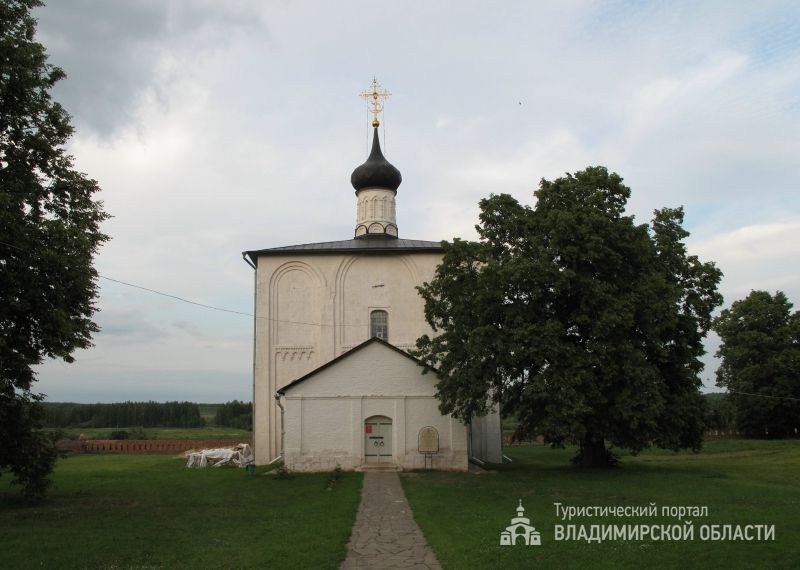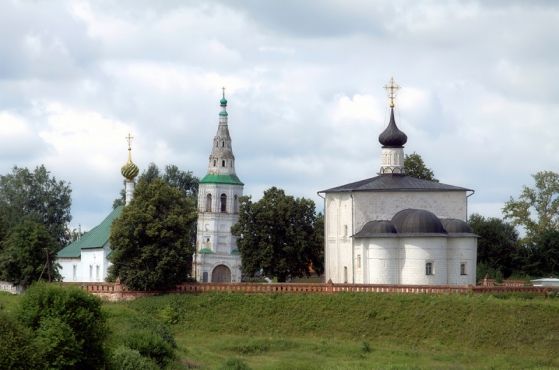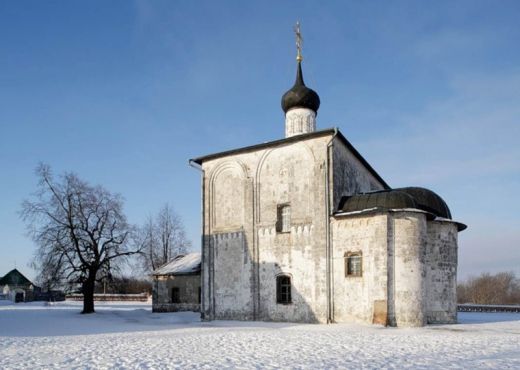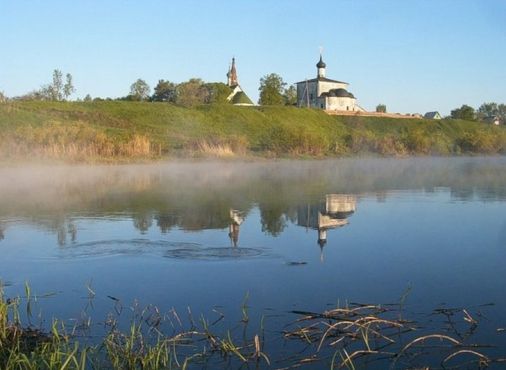Church of SS Boris and Gleb in Kideksha
Four kilometers from Suzdal in the village of Kideksha there is a rare monument, one of the first temples of Vladimir-Suzdal white-stone architecture – the church of SS Boris and Gleb. It was built in 1152 by the squad of the masters of the Suzdal prince Yury Dolgoruky. The ancient (pre-Slavic) village of Kideksha stands near the mouth of the Kamenka River, where it merges with the most important vital artery of the area, the Nerl River, flowing into the Klyazma. Building a fortified town here, Yuri Dolgoruky wanted to take control of the river outlet from Suzdal. According to legend, here, in place of the prince's court, there was a meeting of two "holy prince-brothers" – Boris of Rostov and Gleb of Murom, who drove to Kiev at the call of their father, Vladimir the Red Sun. Subsequently, they were both killed by another brother, Svyatopolk the Damned. This legend about the involvement in the Suzdal places of the first Russian saints, raised the prestige of Suzdal, which was important in the struggle for primacy among the Russian principalities.
The church of SS Boris and Gleb, perhaps, was the center of the prince's court, surrounded by an earthen embankment. Act of Yury Dolgoruky – the construction of the prince's court far away from the capital on the strategically important place of the river route – almost ten years later his son Andrey Bogolyubsky repeated, having built Bogolyubov-town. But unlike Bogolyubovo, in Kideksha there were no palace buildings preserved, but only the church itself. The Prince Yury Dolgoruky stayed in Kideksha for a short time: in 1155 he sat down in the reign of Kiev, where he soon died.
The Church of SS Boris and Gleb did not yet shine with exquisite craftsmanship (as, for example, the Assumption Cathedral and the Cathedral of St. Demetrius later on), but simplicity, nevertheless, gave it a special attraction of the severity and heroic status. Almost cubical in shape, with three protruding mighty half-cylinders of apses, the temple is virtually devoid of carved. The simple white facades were decorated with only the crenate belt and relief-marked zakomars. From the second half of the 13th century, the desolation of the temple began, its vaults, together with the head, collapsed. Only in the 16th-17th centuries, it was repaired using an old white stone. But the four-slope roof with a small head did not reflect the original appearance of the ancient temple at all.
Built in 1152, the temple, apparently, for three or four decades remained without painting. In 1947 fragments of the fresco painting of the church were opened, which, according to the researchers, belong to the 1180s. Probably, the painting was made on the order of Vsevolod III: it is indicated by numerous images of paradise trees and birds, which was characteristic of the white stone carvings of his time and was a departure from the canonical painting system. In addition, the frescoes of arkosolium (a special arched niche arranged in the thickness of the walls) of the northern wall under the choir-gallery have been preserved. Apparently, they depict Vsevolod III's mother in luxurious imperial clothes next to the figure of Saint Mary. In the church of SS Boris and Gleb, the son of Yury Dolgoruky, Boris, was buried, to whom, apparently, the prince's town passed, and his wife Maria. In arkosolium their tombs are still preserved.
To the south of the temple in the late 17th-early 18th centuries, the Holy Gates were set up leading to the descent to the river. In 1780, near the ancient cold temple, a warm church of St. Stephanie was set up. With its high gable roof it resembled a stone-built residential house of the 17th-18th centuries in Suzdal. The complex ends with a tent bell tower of the 18th century.
Thus, the architectural ensemble in Kideksha includes buildings that were divided in time by five centuries, but are surprisingly organically connected. If you look at the complex from the side of the Nerl River, then a subtle understanding of the ancient architects of architecture and nature harmony is felt.
At present, the Church of Saints Boris and Gleb in Kideksha belongs to the Vladimir-Suzdal Museum-Reserve. It is included in the UNESCO World Heritage List.
 Tourism portal of the
Tourism portal of the


